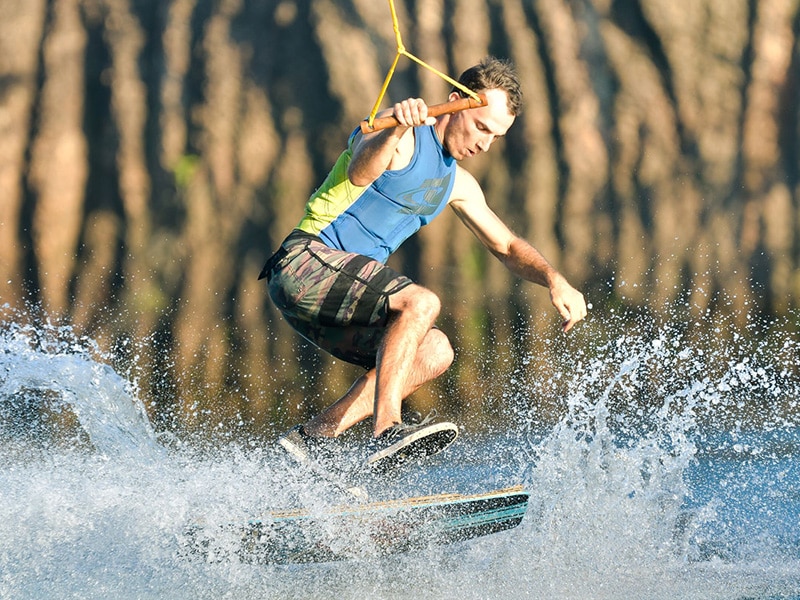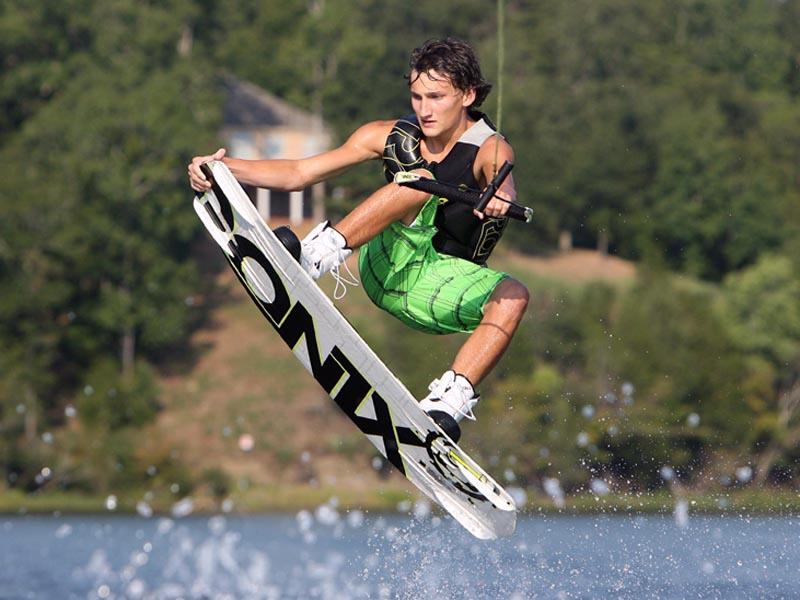
Wakeboard: what it is, where and how to practice it
The good weather comes and, with it, the desire to practice outdoor sports, among which the wakeboard attracts more and more fans. Even so, wakeboarding implies the knowledge of a series …
The good weather comes and, with it, the desire to practice outdoor sports, among which the wakeboard attracts more and more fans.
Even so, wakeboarding implies the knowledge of a series of techniques on how to do it and the necessary equipment, as well as the best places to practice it, especially if you are going to get started in this nautical sport.
The fact that it is a sport that many people practice does not mean that it is free of risks. To face and save expenses of the common incidences when doing wake, we will recommend you the best insurance for wakeboard.
To this end we have prepared this wakeboard guide, keep reading and you will be sliding on the board very soon and in complete safety!
Are you doing wakeboard for the first time? In this guide you will know what it is, how and where to practice it.
What is wakeboard?
The word ‘wakeboard’ comes from the English, where ‘wake’ refers to the furrows or stelae left by the boats, and ‘board’ to the board on which it is practiced.
Therefore, to wake means to practice a nautical activity in which the athlete is pulled by a rope tied to a motorboat. Therefore, the wakeboard would be a kind of water ski, but without skis, since the wakeboarder slides on a board similar to snowboard. For this reason, many consider it a combination of snowboarding and water skiing.
Where to make wakeboard?
The most professional prefer to wakeboard in lakes, swamps or beaches when there is wind and waves to enjoy doing some acrobatics in the air, although we can also take advantage of the waves produced by the boat.
What’s the wakeboard team?
The wakeboard board
A fundamental element to make wakeboard is the board. To choose the most suitable wakeboard board for you, you must take into account the following factors:
Your level
If you’re new to wakeboarding, it’s best to choose a large, wide board, which provides greater control and stability. For advanced levels, better a smaller wakeboard board that allows you to maneuver with more agility.
The rocker or curvature
The continuous rocker wakeboard boards provide greater speed and smoothness, allowing for a more progressive and easy turn. On the other hand, three stage or triple base rocker boards, with a flatter center part and a larger curve at the tips of the board, allow for higher jumps, but more unstable turns.

Type
Mainly there are 2 types of wakeboard boards, those of boat, with keels included, or those of cable/park, without keels to be able to make modules. Within the latter, there are variations depending on whether or not they have channels in the base, although we recommend those that do, because, in the absence of keels, the channels help the conduction and reception of the jumps.
Other elements that are part of the wakeboard team are:
Boots
Wakeboard boots are open or closed. The former adapt to different sizes, but do not provide as much fixation on the foot as the closed ones or those that are more rigid and compact in the heel area.
Bindings
Present at the top of the board, wakeboard bindings allow the rider’s boot to remain attached to the board.
Rope
To choose the wakeboard rope you have to take into account the level of the rider, and therefore the speed at which it will slide. Beginners barely exceed 20 km/h, while the more advanced ones venture at 35 km/h or more.
The rope lengths for beginners are generally 19.8 m., for intermediate, from 19.8 to 22.8 m., and for advanced, from 22.8 to 25.9 m. Another issue to take into account is the quality of the rope, which must not be stretched or yielded.
Palonier
The wakeboarder holds the bearing and remains attached to the boat through the rope. Its material must be resistant to breakage and wear caused by salt water. The rubber grip provides greater grip comfort. Do not forget to check the condition of the bearing before and after each start, as well as the rest of the equipment.
Lifejacket
A wakeboard vest should fit well to the torso while being as comfortable as possible. Remember that it will stretch when it gets wet, so don’t worry if it puts a little pressure on you when you try it on. A guide to choose your size is to take as a reference the contour of your chest.
There are also those with front zipper and/or front buckle, easier to put on, or with side or back zipper, which provides a very precise fit, but more uncomfortable to put on.
Consult store staff about the buoyancy of the vest. As for this feature, some, such as the USGC, are regulated and have a seal of approval.
Helmet
The wakeboard helmet provides protection for the head against blows, is insulating from cold, moisture and sunlight. With striking colours, it makes it easy to locate the rider. There are soft, lighter, and stiff, a little more uncomfortable at first, but safer and stronger. Helmets with earmuffs protect the ear from damage.
How to make wakeboard?
Who decides to wake will experience how, grabbed the palonier with which the rope, is dragged by the boat. Depending on the amount of wind and waves and the speed of the boat, the wakeboarder or rider may dare with more or less jumps and maneuvers. We highlight some important stages for those who are going to make wakeboard for the first time.






